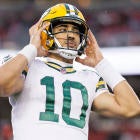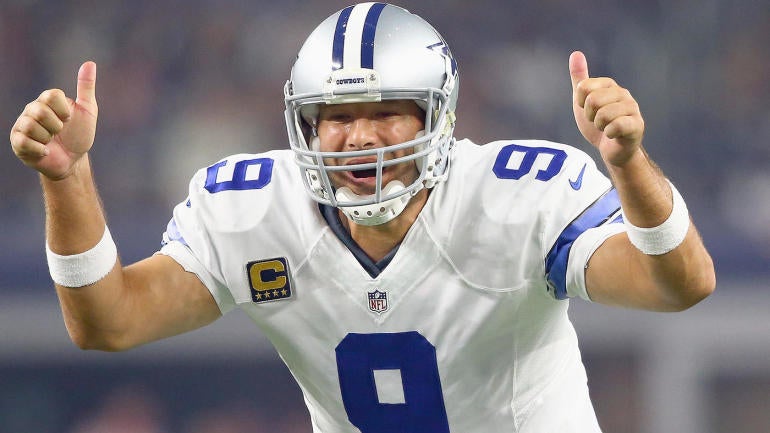
The Dallas Cowboys have long been one of the NFL's best at finding undrafted talent during both the Tom Landry Era (1960-1988) and the Jerry Jones Era (1989-present). There have been relatively recent contributors like quarterback Tony Romo, wide receiver Miles Austin, wide receiver Cole Beasley, offensive lineman Ronald Leary, safety Barry Church and kicker Dan Bailey. They also had some Hall of Famers and Hall of Fame finalists from decades ago, like wide receiver Drew Pearson, safety Cliff Harris, cornerback Everson Walls, offensive lineman Nate Newton and defensive back Cornell Green.
Walls, a 2018 Pro Football Hall of Fame finalist, took the circuitous route to becoming a four-time Pro Bowl selection who led the NFL in interceptions three times (1981, 1982 and 1985) while playing for Hall of Fame coach Tom Landry. He played one year of high school football at Berkner High School in Richardson, Texas, a season he described as "decent," but hardly enough of a pedigree to pop up on many college football recruiting radars in 1976. Walls ended up at Grambling State University, but he didn't receive much playing time in his first two seasons. His junior year was Walls' first as a starter, but he made a noticeable impact with four interceptions. The explosion came in his senior year in 1980 when he led college football with 11 interceptions. However, his on-field accomplishments during his final years of college football became overshadowed by his 40-yard dash time, as his mark of around 4.70 seconds led to him going undrafted.
"I got paid cheap as [an undrafted] free agent," Walls told CBS Sports in 2017. "It's hard to ignore a [productive] player, even though you go to a small school like Grambling State, an HBCU. My 40-time was about 4.7 if I'm not mistaken. I'm of the old-school thought that computers, times and stopwatches do not show what kind of heart or skills any player has. I know there's a lot of money in that, I know a lot of people train in that and make a lot of money off those ancillary services to make you run faster and jump higher. I was always just a ball player. I don't care how fast somebody is. I'm going to do my best to shut this dude down. There are many ways to do it. If I line up against someone one-on-one, I don't give a crap how fast he is, how many touchdowns he's caught, or how many passes he's caught. My job is to shut him down. I always thought I had the physical ability and mental acuity to eventually figure out what that guy's weakness is and then shut him down."
Landing with his hometown Cowboys and displaying a hard-nosed attitude and work ethic endeared Walls to Landry, paving the way for his NFL shot.
"It was really a dream come true," Walls said. "Tom [Landry] wasn't the most hands-on guy as a coach. He had a system, and he had that system since coaching against Jim Brown [in the 1960s]. He's coached against some of the best players in history, so he knows it's tried and true. It's up to you as a player to come in and not screw it up. That was the way he dealt with his players. He just wanted to know that you're good enough to do the job. I knew I was the person to do it.
"The Cowboys secondary was atrocious at the time, and they were bringing in all kinds of players," Walls continued. "We had 25 rookie defensive backs alone. That's unheard of nowadays. Even before the veterans got there, they had to whittle us down from 25 players. The best way for them to do that was to be as hard as possible. My first practice I got cursed out by my coach, and with me coming from an HBCU, this white man with a Southern drawl says 'What's the matter with you, boy?' He goes 'If somebody beats you, you get after him.' I realized the philosophy of what he was doing, to weed out the herd. I wasn't going to make it easy for them. I said 'yes sir' in response. That bought me just a little bit more time. When I got that chance again and that guy ran that same route, I followed him all over the field back to the other side of the ball, back into the huddle. I wasn't going to let that guy get away. That was my attitude as a Dallas Cowboy."
Given the Cowboys' prolific mining of undrafted talent, here's a look at their 10 best undrafted free agents all time in addition to which undrafted players on their current roster could be next in line to make a considerable impact.
10. DB Benny Barnes
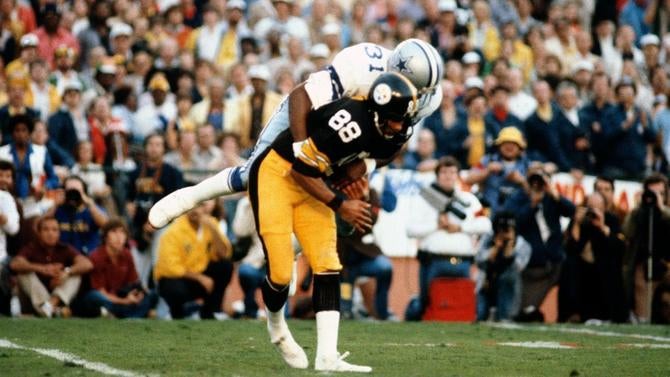
- Seasons with Cowboys: 11 (1972-1982)
- Notable accolades: Recorded an interception in Dallas' 27-10 Super Bowl XII win over the Denver Broncos to conclude the 1977 season
Benny Barnes' undrafted status likely has to do with his mid-college position switch, converting from linebacker to safety after transferring to Stanford in 1970. He started his final 24 games in college and racked up seven interceptions his last year in the Bay Area. Special teams allowed him to latch on with the Cowboys as a rookie, and he eventually became one of the Cowboys' full-time starting corners in 1976. Barnes was a solid contributor to Dallas' Super Bowl team in 1977 as he was one of four Cowboys to intercept Broncos quarterback Craig Morton in the big game.
He led the Cowboys in interceptions with a career-high five the following season, and Barnes co-led the Silver and Blue in interceptions (two) and defensive fumble recoveries (two) in 1979.
9. C Dave Manders
- Seasons with Cowboys: 11 (1964-1974)
- Notable accolades: 1966 Pro Bowl selection, started on Super Bowl VI championship team in 1971 season
Dave Manders played on both sides of the ball in college, serving as a center on offense and a linebacker on defense for Michigan State. He earned third-team All-Big Ten honors after his sophomore season and honorable mention All-American honors after his senior year. The Cowboys initially found Manders in 1962, signing him to be a linebacker after going undrafted. Tom Landry's in-your-face style of coaching may have rubbed him the wrong way as he quit rookie minicamp after three days.
Following a year of playing in the United Football League in 1963, Manders asked for another shot, and he was signed for the 1964 season as a center. He ended up being the anchor of a strong Cowboys offensive line for over a decade. His 1966 Pro Bowl selection was the first Pro Bowl nod by any Dallas offensive lineman. Manders was a starter on the Cowboys' first team to reach the Super Bowl in Super Bowl V where they came up just short against Johnny Unitas' Baltimore Colts, losing 16-13. A year later, Manders and his quarterback, Hall of Famer Roger Staubach, returned to the big game where they won the first Super Bowl Championship in franchise history: a 24-3 victory over the Miami Dolphins in Super Bowl VI.
8. S Michael Downs
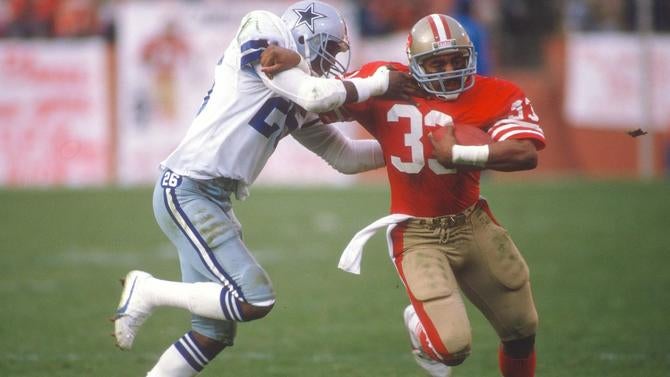
- Seasons with Cowboys: 8 (1981-1988)
- Notable accolades: Tied for the fifth-most interceptions (34) in team history
Michael Downs was another Texas product, going to high school at South Oak Cliff in Dallas before attending Rice in Houston, where he was a three-year starter at safety. Downs suffered a pinched nerve in his neck during his final year in college in 1980, and that injury had a direct impact on him tumbling to undrafted free agent status. He was a full-time starter immediately for Landy, and as a rookie, he rewarded that faith with a career-high seven interceptions.
Downs recorded four or more interceptions in five of his eight seasons with the Cowboys, setting the standard for safety in Dallas prior to the team's 1990's glory years.
7. LT Mark Tuinei
- Seasons with Cowboys: 15 (1983-1997)
- Notable accolades: Two-time Pro Bowl selection (1994-1995), three-time Super Bowl shampion (XXVII, XXVIII, XXX)
Mark Tuinei started his career as a defensive lineman at UCLA, but after two seasons he transferred to the University of Hawaii because of disciplinary issues. An arrest that led to him spending three months in prison cost him his junior season, and he only played seven games as a senior because of injuries.
In 1985, his third season with the Cowboys after going undrafted, Tuinei was flipped over to the offensive side of the line, and he became the regular starter at left tackle in 1986. He opened running lanes for Hall of Famers Tony Dorsett and Emmitt Smith over the years while pass-blocking for Hall of Famers Troy Aikman and Michael Irvin. His presence protecting Aikman's blindside was critical to their three Super Bowl championships in four seasons in the 1990s, cementing his place as one of the best offensive linemen in team history.
6. CB Everson Walls
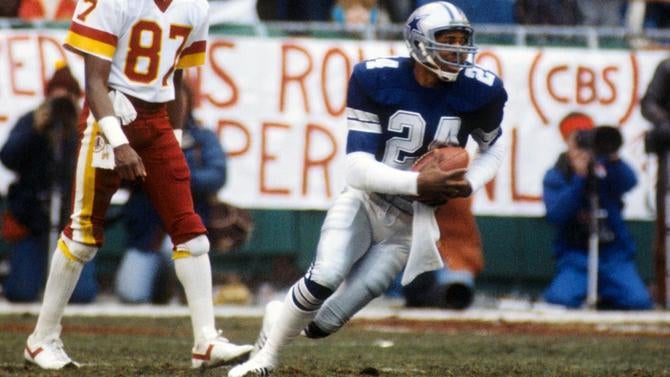
- Seasons with Cowboys: 9 (1981-1989)
- Notable accolades: Four-time Pro Bowl selection, 1983 first-team All-Pro, led NFL in interceptions three times (1981, 1982, 1985), second-most interceptions in team history (44), 2018 Pro Football Hall of Fame finalist
Much of Walls' story is already detailed above, but one of the more impressive things about his career was his immediate impact. He burst onto the NFL scene with 11 interceptions in 1981, the most in the NFL, and led the league in that category once again in his second year with seven in 1982. Walls did so again in 1985 with nine. His three seasons leading the NFL in interceptions are tied for the most in league history with Hall of Fame Baltimore Ravens safety Ed Reed.
Walls' Cowboys were consistently contending, reaching the NFC Championship game four times -- in 1981, 1982, 1983 and 1985 -- but they were never able to get over the hump. If they had and Walls had some jewelry, his place on this list would be much higher.
5. S Cliff Harris
- Seasons with Cowboys: 10 (1970-1979)
- Notable accolades: Six-time Pro Bowl selection, three-time first-team All-Pro, two-time Super Bowl champion (VI, XII), 1970s All-Decade Team, Pro Football Hall of Fame Class of 2020
Hall of Famer Cliff Harris was the definition of a late bloomer in the NFL. He went undrafted in 1970 after dominating at a small school, Ouachita Baptist University, but he earned the starting free safety spot with the Cowboys as a rookie. Harris played in a total of five Super Bowls, winning two (VI against the Miami Dolphins and XII against the Denver Broncos) and losing three (V against the Baltimore Colts, X against the Pittsburgh Steelers and XIII against the Pittsburgh Steelers).
Harris' final six seasons (1974-1979) of his career far surpassed his first four (1970-1973). He earned a Pro Bowl nod in each of his final six seasons while being named a first-team All-Pro in three of them. Harris retired relatively young at the age 31 for a player who had hit his stride, but he was one of the most impactful players in the NFL for a decade.
4. OL Nate Newton
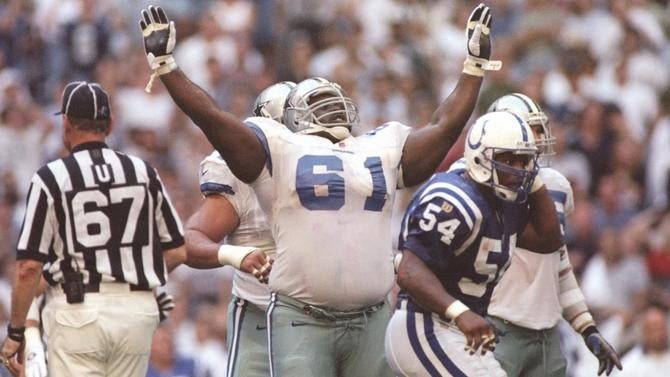
- Seasons with Cowboys: 13 (1986-1998)
- Notable accolades: Six-time Pro Bowl selection, two-time first-team All-Pro, three-time Super Bowl champion
Nate Newton had a bumpy ride to end up where he is on this list, but once he made it to the Dallas Cowboys, his NFL career was full of smooth sailing. After playing college football at Florida A&M, Newton signed with Washington as an undrafted free agent. However, a car crash and subsequent injury from the incident led to his release. Newton played two seasons in the USFL in 1984 and 1985 before the league folded.
That led to him signing with the Cowboys as a free agent in 1986. Newton became a full-time starter along the offensive line in his second season in 1987. He shared an offensive line with another entry on this list Mark Tuinei, opening running lanes for Hall of Famers Tony Dorsett and Emmitt Smith while pass-blocking for Hall of Famer Troy Aikman and Michael Irvin. His work on the interior of their offensive line was significant to their three Super Bowl championships in four seasons in the 1990s, cementing his place as one of the best offensive linemen in team history. Only Hall of Famer Larry Allen (10), current Cowboys guard Zack Martin (8) and current Cowboys offensive tackle Tyron Smith (8) have more Pro Bowls among Cowboys offensive lineman than Newton.
3. WR Drew Pearson
- Seasons with Cowboys: 11 (1973-1983)
- Notable accolades: Three-time Pro Bowl selection, three-time first-team All-Pro, Super Bowl XII champion, 1970s All-Decade Team, Pro Football Hall of Fame Class of 2021
The reason jersey No. 88 has meaning for the Cowboys is because of Drew Pearson. Other top receivers for the Cowboys have soared to some big heights when it comes to winning or statistical production like Hall of Famer Michael Irvin, Dez Bryant, and now CeeDee Lamb today, but Pearson is the original.
He went undrafted out of the University of Tulsa in 1973 because of a mid-college position switch (going from quarterback to wide receiver) and playing in a run-first offense, leading to ho-hum statistical output. Pearson helped power the Cowboys to three Super Bowl appearances, winning one, thanks to his numerous clutch plays. His 50-yard, game-winning touchdown catch from Hall of Famer Roger Staubach with under 30 seconds left against the Minnesota Vikings in the 1975 NFC Divisional Round became the first "Hail Mary". Pearson also caught a game-sealing 83-yard touchdown in a 27-16 NFC Divisional Round playoff game against the Los Angeles Rams.
At the time of his retirement, his 489 receptions and 7,822 receiving yards were Cowboys franchise records. They aren't atop the Dallas leaderboards anymore, but Pearson remains one of the best at his position in team history.
2. QB Tony Romo
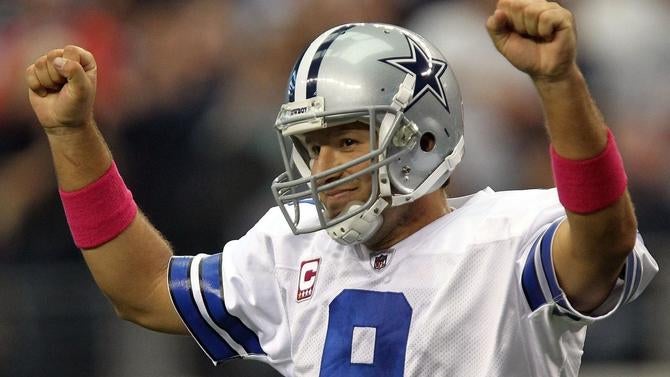
- Seasons with Cowboys: 13 (2004-2016)
- Notable accolades: Four-time Pro Bowl selection, Cowboys' all-time leader in passing yards (34,183) and passing touchdowns (248)
Tony Romo went from being undrafted out of Eastern Illinois to becoming the Cowboys' all-time leading passer, shattering Hall of Famer Troy Aikman's records in the process. That's an incredible career given where it started. Romo powered some electrifying Dallas offenses loaded with talent like Hall of Famer Terrell Owens, future Hall of Fame tight end Jason Witten, wide receiver Dez Bryant and running back DeMarco Murray.
Unfortunately, Romo was never able to outduel his peers come playoff time, falling short in four of his playoff contests and never advancing past the NFC Divisional Round. Injuries also took a toll on his career like a broken collarbone and a preseason back injury in 2016 that paved the way for fourth-round rookie Dak Prescott to become the Cowboys quarterback. Romo provided some memorable highs and lows for Dallas fans at the game's most valuable position. That's good for one of the top spots on this list.
1. CB Cornell Green
- Seasons with Cowboys: 13 (1962-1974)
- Notable accolades: Five-time Pro Bowl selection, three-time first-team All-Pro, Super Bowl VI champion, never missed a game in 13 seasons
Cornell Green has a case for being the most reliable player in Cowboys history. He played all possible 182 games in 13 NFL seasons while starting 173 of them. The reason he went undrafted is because he never played college football. Green did get selected in the fifth round of the 1972 NBA Draft after playing college basketball at Utah State.
Dallas gave him a $1,000 signing bonus to come try out for its football team. After a year of adjusting to football, he totaled a career-high seven interceptions in his second season. Green earned three Pro Bowl selections and three first-team All-Pro nods as a cornerback from 1962-1969, but after other injuries in the secondary head coach Tom Landry moved the durable defensive back to safety. He rewarded his head coach's trust by earning consecutive Pro Bowl selections at that spot in 1971 and 1972 as the team reached consecutive Super Bowls and came away victorious to conclude the 1972 season.
The most durable and versatile undrafted free agent in Cowboys history earns the top spot on this list.

Pick Six Newsletter
Crafted By The Best NFL Experts
Get the day's big stories + fun stuff you love like mock drafts, picks and power rankings.
Thanks for signing up!
Keep an eye on your inbox.
Sorry!
There was an error processing your subscription.
Who's next?
Some of the notable current Cowboys who made the roster after going undrafted include right tackle Terence Steele, backup quarterback Cooper Rush, tight end Peyton Hendershot, wide receiver Dennis Houston, and running back Malik Davis. Out of this group, Steele has made the largest impact as a regular starter along the offensive line since 2020. His health coming back from a torn ACL is one of the bigger questions remaining this offseason. Rush also did a nice job keeping the Cowboys offense afloat as the team went 4-1 in his five starts last season while Dak Prescott was nursing a thumb injury.
Among the 13 undrafted free agents the Cowboys signed in 2023, Oregon guard T.J. Bass, North Dakota State fullback Hunter Luepke, and Florida A&M linebacker Isaiah Land have the strongest chances to make the roster given they play positions where Dallas could use some depth. Steele's aforementioned knee injury and his return from it this season could cause some shuffling along the offense line, which is where Bass' presence could become critical.
Luepke could be a nice goal-line/short-yardage blocker and pass-catcher out of the backfield after a stellar college career. With Micah Parsons seemingly making a positional switch from linebacker to defensive line, Land could be a nice depth stash at linebacker behind Damone Clark and Leighton Vander Esch.










